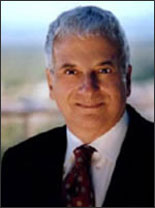No matter what the procedure, careful consideration, research and evaluation is necessary before committing to elective surgery. There are many questions to be asked and options to consider.

 We caught up with Tempe, Arizona Plastic Surgeon Dr. Richard Pavese to discuss his insights into the patients’ decision making process. Dr. Pavese is a board-certified plastic surgeon, certified by the American Board of Plastic Surgery and a member of the American Society of Aesthetic Plastic Surgery. He has over 25 years of experience in the Valley. We learned tips for choosing a qualified surgeon and about an up-and coming Fat-Grafting procedure that is used both in reconstructive as well as cosmetic surgery.
We caught up with Tempe, Arizona Plastic Surgeon Dr. Richard Pavese to discuss his insights into the patients’ decision making process. Dr. Pavese is a board-certified plastic surgeon, certified by the American Board of Plastic Surgery and a member of the American Society of Aesthetic Plastic Surgery. He has over 25 years of experience in the Valley. We learned tips for choosing a qualified surgeon and about an up-and coming Fat-Grafting procedure that is used both in reconstructive as well as cosmetic surgery.
Q: When choosing a Surgeon, why is it important for people to be aware of their surgeon’s board certification?
A: Board Certification means that a surgeon has had formal training in Plastic Surgery. To be certified by the American Board of Plastic Surgery the surgeon must have at least five years of surgical training after medical school of which two years are in Plastic Surgery. They then must pass a certification exam in Plastic Surgery. The training is in-depth so that a surgeon can handle cases that are more difficult as well as complications if they arise.
Q: There are many doctors with all types of backgrounds performing Facelifts and Breast Augmentation. How can just anyone perform Plastic Surgery?
A: The Medical Board does not license for specific procedures, they license for the practice of medicine. If the surgery is done in a private office there is no oversight. To do surgery in a hospital you must be specifically trained and certified in that area of medicine. So hospital privileges are also an indication of specific training.
Q: What would you say is the main emphasis in your practice?
A: We primarily do cosmetic procedures; especially breast surgery. Breast Augmentation, Breast Lift, replacement of prior implants with new silicone gel implants, and Breast Reconstruction.
Q: How long is the recovery following Breast Augmentation?
A: We seek to get patients back to work within a few days. Many of our patients choose to have Augmentation under a local anesthesia with a gentle sedation so that they don’t have to recover also from a gas anesthetic. More strenuous activities such as working out may be possible in 2-3 weeks. Recovery rates also vary between patients.
Q: Is there anything to alleviate patient’s apprehension before Breast Augmentation surgery?
A: Before the consultation we try to give patients as much information as possible. This increases their comfort level. Our website shapely.com is helpful in this regard. It demonstrates and discusses silicone versus saline implant choices and other background information.
Another source of anxiety is what they will look like after surgery. In this regard we have a 3-D imaging system to show what a specific sized implant will look like on their frame. We will also show photographs of people with similar frames and sized with a specific implant. Implants are also tried on inside of their clothing so they can get an idea of what to expect after surgery. Between the imaging system, before and after pictures, and trying on the implants, patients leave their consult with a good idea as to what they can expect after their surgery.
Q: What can a patient expect during a Breast Augmentation consult?
A: We first obtain a complete medical history and physical examination as well as an analysis of the patients frame. All decisions are discussed including choice of implant types, silicone versus saline, incision location, size, shape, need for a lift etc. We listen to the patient’s goals for the procedure. The procedure can be done under either a general or a local anesthetic which is also discussed with the patient.
Q: How long is the recovery, typically?
A: The recovery varies by activities. If they want to drive, they can as soon as they are off pain medication. If they want to water ski they will likely need to wait five to six weeks. It is dependent on what the patient wants to do. They might not be at the gym doing a workout for two to three weeks. It’s like any surgery- knee surgery or ankle surgery- there is a healing process involved.
